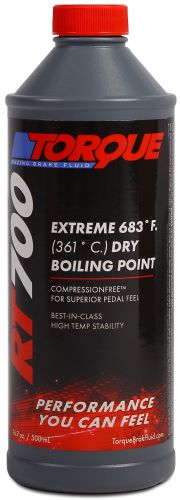July 2023 Comments made by others suggested that Project Mu HC-EP brake pads may offer improved braking. According to the data on the Project Mu website they do offer a considerable improvement in Friction Coefficient compared to other pads I had been using. The Friction Coefficient range of 0.43 to 0.58μ is a lot better than the 0.3 to 0.4μ of standard pads. The higher the coefficient of friction, the less fluid pressure (lighter push of the brake pedal) is required to create a high braking force.
March 2024 The Project Mu brake pads did provide much better braking, but had the undesired problem of over heating the brake fluid after a few laps. Some research revealed that Torque RT700 was the best option to try. Torque RT700 brake fluid offered the highest wet and dry boiling points along with one of the lowest compressibility figures. Titanium shims were also fitted and some ducting added to direct air over the callipers was also incorporated. The brake pedal effort required to stop the car was now much improved and stayed consistent over a 5 lap sprint event.
May 2024 I decided to make the same changes to the rear brakes - Project Mu HC-EP pads and Torque RT700 brake fluid. Overall the brakes are now considerably better, the pedal is firmer and more consistent throughout each race and there is no brake fade.

| Brake Pads | Front Pads | Rear Pads |
| Part Numbers | F236 HC-EP | R236 HC-EP |




